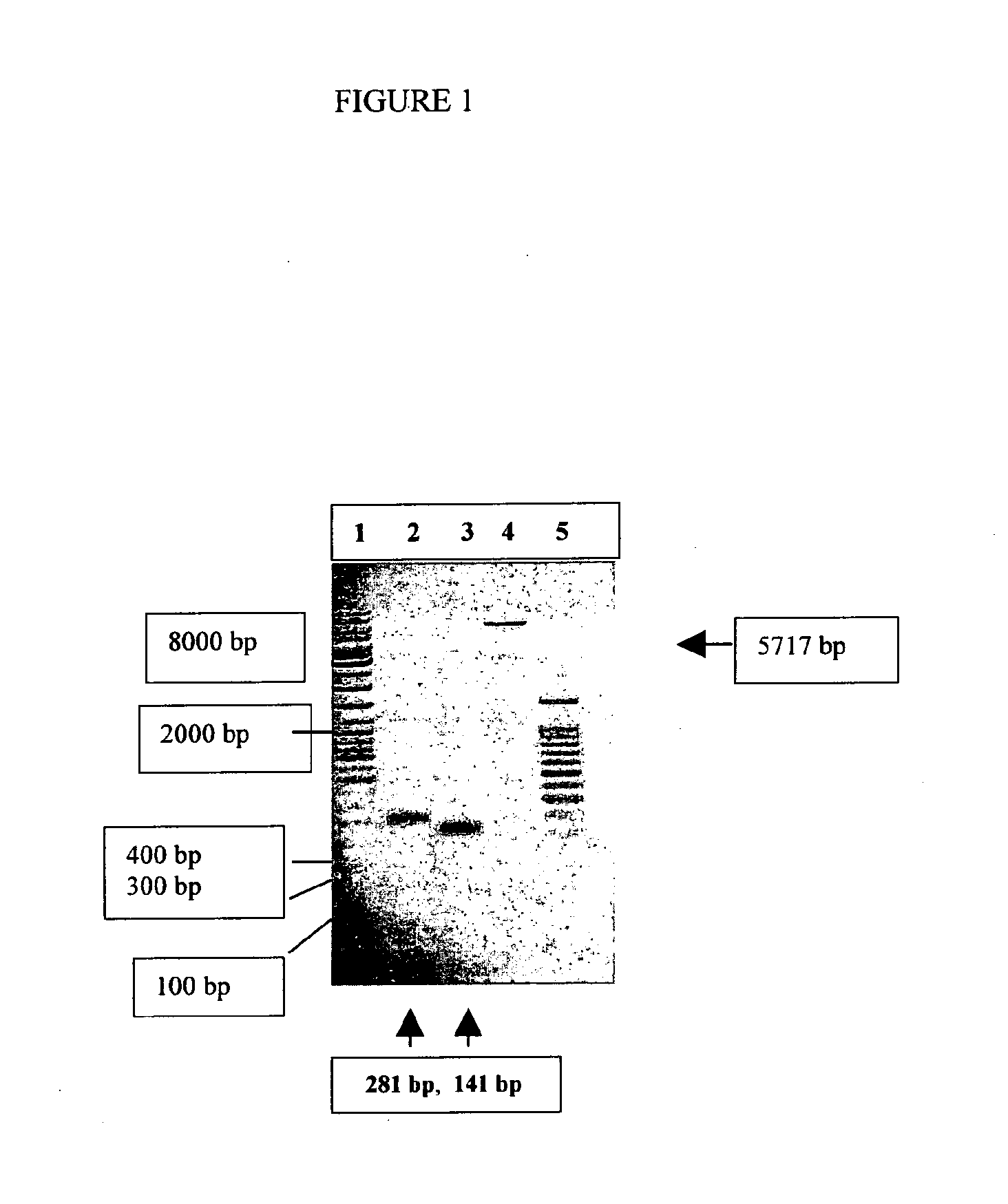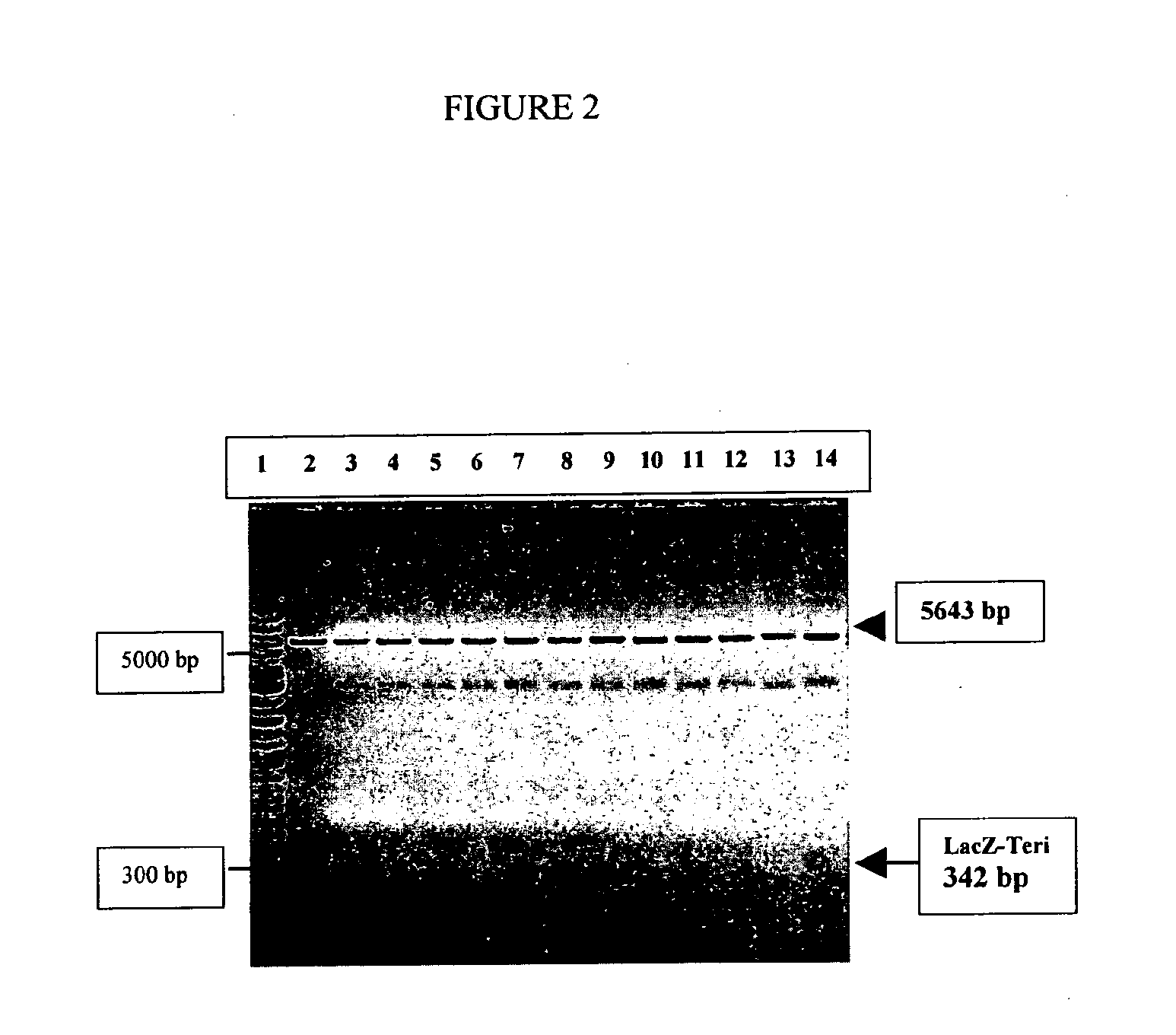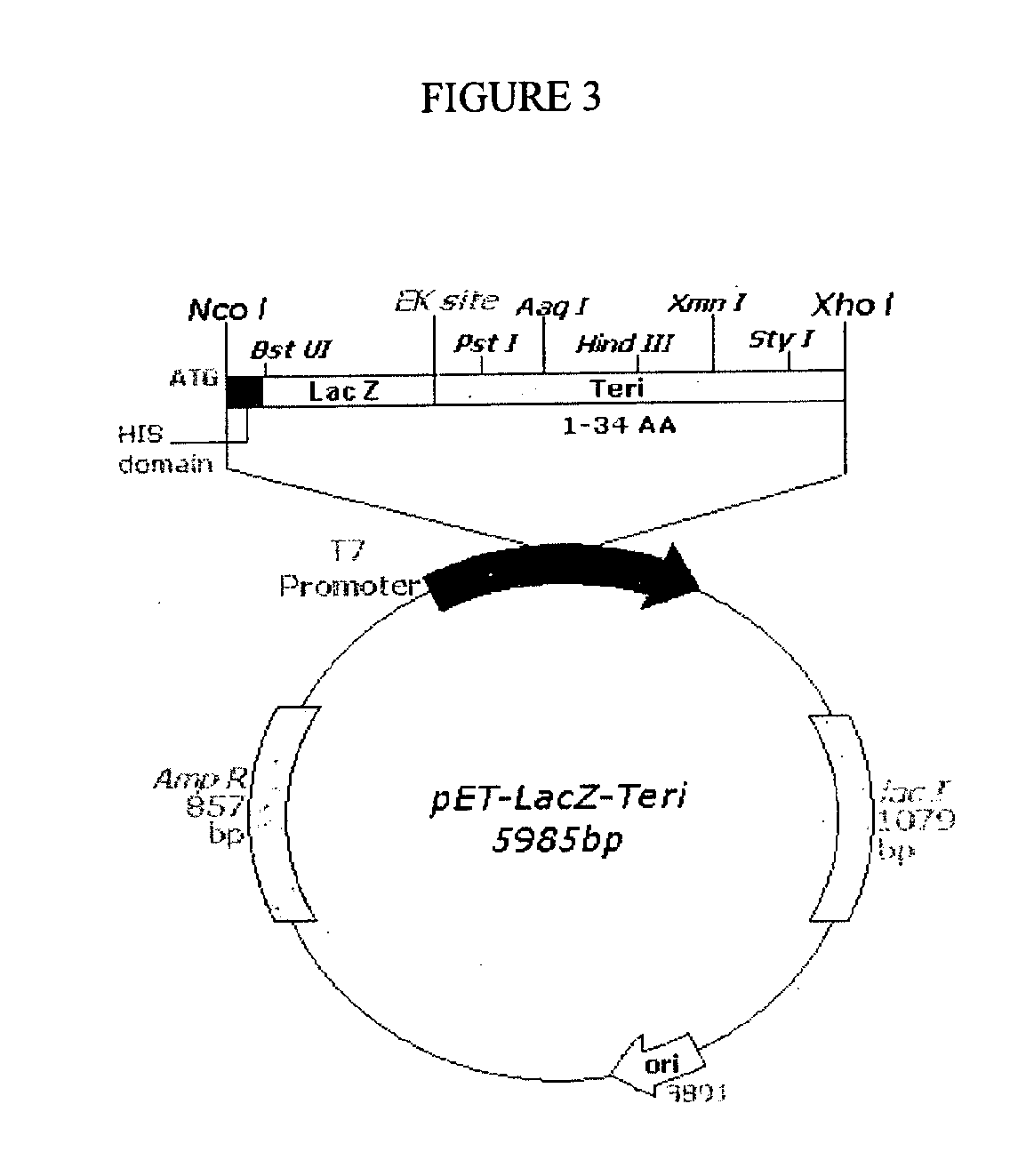Novel orthogonal process for purification of recombinant human parathyroid hormone (RHPTH) (1-34)
a technology purification process, which is applied in the field of new orthogonal process for purification of human parathyroid hormone (rhpth) (1-34), can solve the problems of low yield, slow separation and lower peak resolution of gel filtration chromatography (gfc), and high risk and cost of chemical synthesis
- Summary
- Abstract
- Description
- Claims
- Application Information
AI Technical Summary
Benefits of technology
Problems solved by technology
Method used
Image
Examples
example 1
Total RNA Isolation and Synthesis of the 1st Strand cDNA
[0087]Total RNA was isolated from by “RNAgents For Total RNA Isolation Systems” (Promega, Cat #Z5110). About 2 g of tissue was processed. A strategy was taken where full length PTH cDNA were isolated from several tissue sources e.g., liver, kidney, brain and placenta total RNA. Total RNA pellet was resuspended in 1 ml nuclease-free water and stored at −70° C. Total RNA concentration was about 4 ng / ml. Polyadenylated RNA was pooled with the help of Oligo (dT)8+12 beads from total RNA as described above. 10 ng of total RNA was used for each reaction. Polyadenylated RNA was reverse-transcribed into single-stranded complementary DNA (1st-strand cDNA template) using AMV reverse transcriptase at 42° C. for 1 hr. About 20 ng / ul of 1st-strand cDNA was obtained. 1st-strand quality was checked by amplifying beta-actin primer pairs.
example 2
PCR Amplification of Putative 1-84 Amino Acid Containing PTH cDNA from Tissue Sources
[0088]Based on the full length 1-84 amino acids gene specific primer pair were synthesized for 1st strand generation by RT-PCR method. All the above mentioned tissue sources were used for amplification and were found to be positive for PTH. Finally liver was selected for cloning of 1-34 aminoacids domain of PTH into a T7 E. coli expression vector system. 476 by cDNA encoding 1-84 aminoacids was cloned and was the template for further amplification of 1-34 amino acid domain. RT-PCR was done on the mRNA pool using gene-specific primer pair (SEQ ID. NO. 3 & 4) that was developed on PTH cDNA sequence. These pair was used to amplify 476 by PTH full length cDNA sequence (Fragment 1).
example 3
Ligation and Transformation
[0089]The ligation mixture containing 20 ng-50 ng DNA of Fragment 1 (476 bp) was separately ligated with the pUC-18 based TA-cloning vector and pET-19b vector into JM109 and BL21(DE3), respectively. To increase the number of transformants plates were incubated overnight at 4° C. Restriction enzyme analysis and Sequence analysis on the positive clones was done to confirm the same. Several positive clones for PTH (1-84) were obtained.
PUM
| Property | Measurement | Unit |
|---|---|---|
| conductivity | aaaaa | aaaaa |
| conductivity | aaaaa | aaaaa |
| pH | aaaaa | aaaaa |
Abstract
Description
Claims
Application Information
 Login to View More
Login to View More - R&D
- Intellectual Property
- Life Sciences
- Materials
- Tech Scout
- Unparalleled Data Quality
- Higher Quality Content
- 60% Fewer Hallucinations
Browse by: Latest US Patents, China's latest patents, Technical Efficacy Thesaurus, Application Domain, Technology Topic, Popular Technical Reports.
© 2025 PatSnap. All rights reserved.Legal|Privacy policy|Modern Slavery Act Transparency Statement|Sitemap|About US| Contact US: help@patsnap.com



